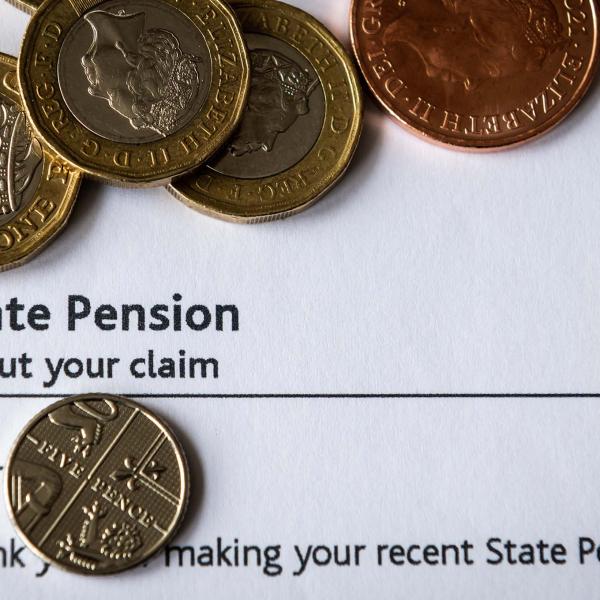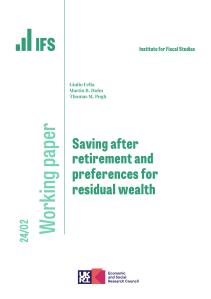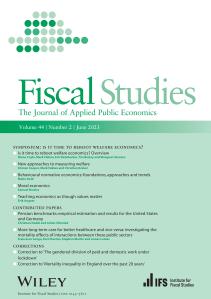The new state pension (also known as the ‘single-tier’ or ‘flat-rate’ pension) was legislated for by the coalition government and affects all those who reach state pension age on or after tomorrow (6 April 2016) – that is, men born on or after 6 April 1951 and women born on or after 6 April 1953. Anyone born before these dates will be unaffected.
The government has been keen to stress two selling points of the new pension arrangements. First, it will be more generous to many of those approaching retirement who have spent time self-employed or out of the labour market for reasons such as caring for children or other adults, and who accrued lower state pension entitlements under the old system as a result. Second, the new state pension will be a much simpler system. The message from the government has been relatively simple: if you ‘contribute’ for at least 35 years, you will receive a full state pension of £155.65 per week.
Short run gainers
In the short run, many will indeed gain from the new pension. Our analysis suggests that 43% of those reaching the state pension age between 6 April 2016 and 5 April 2020 are likely to receive a higher state pension under the new system than under the old system. Women and the self-employed are more likely to gain than other groups: we estimate that 61% of women and 55% of those who have been self-employed for more than 10 years will gain under the new system. We estimate that women will gain on average £5.20 per week in additional state pension income at the state pension age, and those who have been self-employed for at least 10 years will gain an average of £7.50 per week. This is, arguably, a very generous bonus to the self-employed, whose lower National Insurance contributions have historically been justified on the grounds that they accrued lower benefit entitlements. The losers will be those who have accrued fewer than ten years’ contributions – under the old system they would have received a small pension, now they may receive nothing.
Simplicity oversold?
However, the simplicity of the new system has been at best misunderstood and at worst overstated. It is certainly not the case that everyone retiring after today will receive £155.65 per week in state pension, nor even that all those with at least 35 years of 'contributions' will do so. Transitional arrangements mean that some people will receive more than this amount and others less. Our analysis suggests that only 17% of those reaching the state pension age over the next four years will receive a state pension worth exactly the single tier amount, while 23% will enjoy a higher income and 61% will receive a lower state pension income.
There are good reasons for these differences in entitlements. Those enjoying more than £155.65 per week are those who have already accrued entitlement to more than this amount under the old state pension arrangements: they will see that entitlement protected.
The main reason why so many people will receive a single tier pension below the full amount is because they have had periods in the past when they ‘contracted out’ of the additional state pensions – that is, they paid reduced rates of National Insurance contributions in exchange for reduced pension entitlement. These people will have their state pension reduced in recognition of the lower contributions that they paid. Eight-in-ten of those reaching the state pension age over the next four years will have been contracted out at some point during their lives. Although these individuals have a relatively low state pension entitlement, in return for contracting out they will have accrued rights in a private pension that are (in expectation) worth at least as much as the state pension forgone.
These arrangements for those who have been contracted out are a necessary complexity of the transition process. It would have been very generous to these people not to reduce their state pension in recognition of the lower contributions they made as a result of contracting out. In fact, the transition arrangements chosen, which allow those who have been contracted out in the past to ‘work this off’, already treat this group more generously than otherwise-identical individuals who have instead been contracted in.
There are sensible reasons why not everyone is entitled to the same state pension amount, but this is likely to still come as a surprise to many people. So much of the government and media focus has been on the 'flat rate' amount of £155.65 per week that people can easily be forgiven for expecting that amount to apply to them. In the long run anyone with 35 years of 'contributions' will get the same £155.65 per week amount, but that will not happen for many years.
The real simplicity – and long run losers
The new pension system is simpler than the old one even in the short run, but in a more subtle way. After 6th April, DWP will be informing all individuals of their 'foundation amount' – that is, how much state pension they would be entitled to now if they undertook no further activity. Then for each additional year of 'contribution' going forwards, an individual will accrue an additional state pension entitlement of £4.44 per week (i.e. 1/35th of £155.65) up to a limit of £155.65 per week. In other words, accrual to the new state pension will be 'flat rate' and it will be much easier for individuals to understand how much an additional year of activity will add to their state pension income entitlement.
What the government has been less keen to point out is that – after an initial transition period – for most individuals that rate of accrual will actually be lower than accrual under the state pension system that is being replaced. Ministers and others have frequently compared the new state pension amount of £155.65 per week to the old basic state pension amount of £119.30 per week. Understandably, many individuals have drawn from this that the new state pension is more generous. However, virtually all 'contributing' individuals (the self-employed being the main exception) would have – under the old system – accrued entitlement not only to the basic state pension but also to the 'state second pension'. Taking this into account, an extra year of activity would actually have earned you more in state pension rights under the old system than it will under the new system. Of course this has the advantage that, over the longer term, the new single-tier state pension will be cheaper than the system it replaces and therefore the reform strengthens the long-run public finances.
Conclusion
The long-run objectives of the single tier pension system are clear. The aim is to replace the complex mess of existing rules (which had been built up through repeated tweaks to the system) with a new, far simpler system that rewards a wide range of ‘contributions’ (whether that be paid employment or caring for children) in exactly the same way. This is a simplification and rationalisation of a complex system which has proved fearsomely difficult to reform just because of its complexity. This also represents the culmination of more than 30 years of efforts to remove the earnings-related element of the state pension that was first introduced in 1978.
But continued complexity is unavoidable in the short-run, as people are moved over from the old system to the new. There is a considerable risk of disillusionment as people start claiming pension incomes this year. Given the rhetoric around the policy, it might come as a nasty surprise to many that their state pension income is in fact less than the full ‘flat rate’ amount of £155.65 per week. It would be a shame if such disillusion was to threaten the sustainability of what is on balance a sensible reform. It is also important to be clear that in the longer-term, as well as achieving a genuinely simpler system, the new single-tier pension will be less generous – and therefore less costly to the taxpayer – than the system it replaces.








